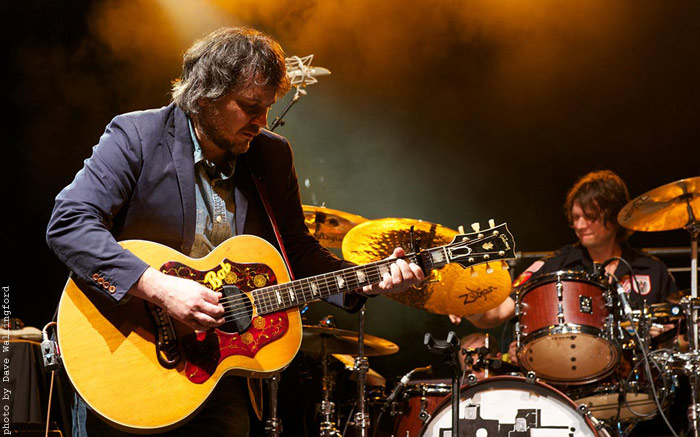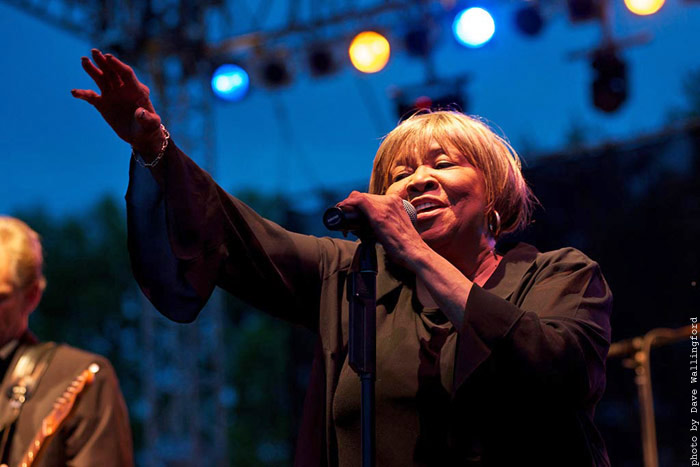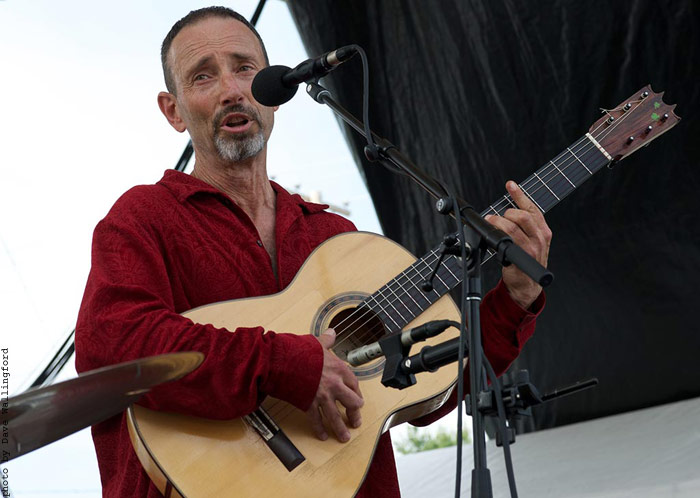
Hocking College, Nelsonville, May 30–June 2
by Matt Slaybaugh
It was a brutally hot Friday afternoon, and I’d just purchased a $7 burrito from a lazily named food truck (The Burrito) after narrowly avoiding a hula hoop that escaped from some young hippie’s undulating waist and flew at my head. It was my first time at the Nelsonville Music Festival, and I thought I knew what I was in for. I made my way with my burrito over to the main stage for a set from Nick Tolford & Co. Tolford’s crew delivered their blue-eyed soul with a buoyancy that had young and old bouncing and enjoying the afternoon. Tolford’s group, pushing up through the ranks of Ohio’s most beloved touring acts, in some ways strikes me as the quintessential Nelsonville band—not too loud, kid-safe, local but on the rise, nostalgia-fueled but truly talented, and really, really friendly.
In contrast to most music festivals I’ve attended, no one seemed to be in much of a rush in Nelsonville. It was such a laidback, take-it-easy atmosphere, I was surprised to hear anyone turned up very loud. There wasn’t too much jostling for position, even when the headliners (including Cat Power, Gogol Bordello, and Wilco) showed-up. There was plenty of room for everyone, and there weren’t too many people working too hard to be too cool. At times, it was downright relaxing—charming, even.
It helps that the Nelsonville Music Festival is in a pretty pastoral locale. The train tracks are now in use as bike trails, and there’s no trace of urbanity outside the festival grounds. Walk up the narrow path past the porch stage, between the glass blowers and $1-a-minute massage cart, to the right of the picnic tables and before you get to the hammock, and you’ll find a half-dozen log cabins, including the festival’s most unique offering, the No-Fi Cabin. Sure most fests have their B and C stages for lesser knowns, but where else will you find a log cabin outfitted with benches to seat 20, and no amplification of any kind. There you could catch stripped down sets from Cotton Jones or Jerry DeCicca or be part of the special intimacy such a setting elicits. I didn’t see it, but I heard from more than one lucky spectator that Anais Mitchell and Jefferson Hamer’s No-Fi set, their last at the end of a long tour, was rife with the emotion of something ending, and quietly moving in a way their earlier main stage performance couldn’t have been.
And so I filled the weekend by wandering aimlessly between stages, watching the clouds roll by, and sitting under as many trees as I could. Big trouble rolled in Friday night, though. A raucous storm delayed the festival for more than 90 minutes. I was hiding in the press tent, so I could only imagine the chaos on the nearby camping grounds. Amazingly, though, the crowd totally failed to complain or put up much of a fuss. Instead, they just greeted the eventual return of the music with smiles and cheers. It helps that the artists were so accommodating, and Lee Fields even benefited from the delay. His set of traditional soul (he’s appropriately nicknamed “Little JB”) was far better suited to the night than to the late afternoon sun. After a brief set from Fields and his Expressions, the stage was set for Cat Power. She too benefitted from the trials the audience had to endure just to get to her show. Her dramatic set—kicking off with a slow, wailing version of “The Greatest”—was bolstered by her thumping rhythm section and there was far more fist-pumping in the crowd that I would have expected.

Saturday’s heat was much more mild, thank goodness, and festival-goers were treated to variations on the rootsy theme for most of the day. Heck, Calexico sounded so much like a jam band I wondered if they’d altered their approach to suit the surroundings. As evening drew on, though, the energy really started to pick up. The Sundresses got rowdy and the County Pharaohs played their sludgy take on ’70s, all-American rock music. Then, Mavis Staples arrived on the main stage with her gravelly gospel and her band’s sparse blues mix to give the people what they wanted. After a couple of songs from her recent albums, she and her back-up singers moved quickly into “The Weight” (as famously performed in The Last Waltz) and she even let her bassist take a (pretty respectable) shot at Rick Danko’s verse. Then she brought out Jeff Tweedy to duet on the title track from the the first album he produced for her, You Are Not Alone.
And then the pouring rain arrived. Yes, again. The show shutdown for almost two hours, as the thunder and lightning provided a show of their own. Eventually, though, the floor was mopped, Mavis Staples sent a fond farewell, and Wilco took to the stage. They opened up with a few relatively early and pretty tunes, reaching as far back as A.M. and getting a third of the way through their set before playing anything from their most recent album, 2011’s The Whole Love. They brought some dissonance to songs like “Poor Places” and “Art of Almost,” but for my money, this version of the band sounds best when they bring that fuzzy, pop sound, as they did on “Company in My Back.” Their hearts just don’t seem to be in the noise anymore. Or maybe it just didn’t seem to fit the campfire sing-along surroundings. Tweedy did note that the place smelled “like an audience made of charcoal.”

Though I didn’t have the delight of finding my new favorite band, I did get to witness a couple of unforgettable (though short) sets, most notably from Lee Fields and Mavis Staples. But the Nelsonville Festival has a lot to brag about in the unique setting and the broad diversity of its offerings. While Wilco, John Prine, and the morning yoga sessions seem to describe the boundaries of a certain type of musical offerings, Nelsonville is far more inclusive. The festival made room for the authentic salsa of Los Hancheros, the prog-rock screams of Wooden Indian Burial Ground, the abrasive raunch of Screaming Females, and all of Jonathan Richman’s eccentricities. In other words they make room for surprises. Which surprised me, in a pleasant, laidback, easygoing way.
The Breeders and How to Dress Well and Sky Ferreira Live Reviews
Swans Live Review
Better Than Something
Mark Eitzel Live Review
A Place to Bury Strangers Live Review
My Career As a Jerk
Punk: An Aesthetic
The Jon Spencer Blues Explosion Live Review
Public Image Ltd. Live Review
October Festival Guide
The Minus Times Collected
The Jesus and Mary Chain Live Review
Love Rock Revolution
September Festival Guide
